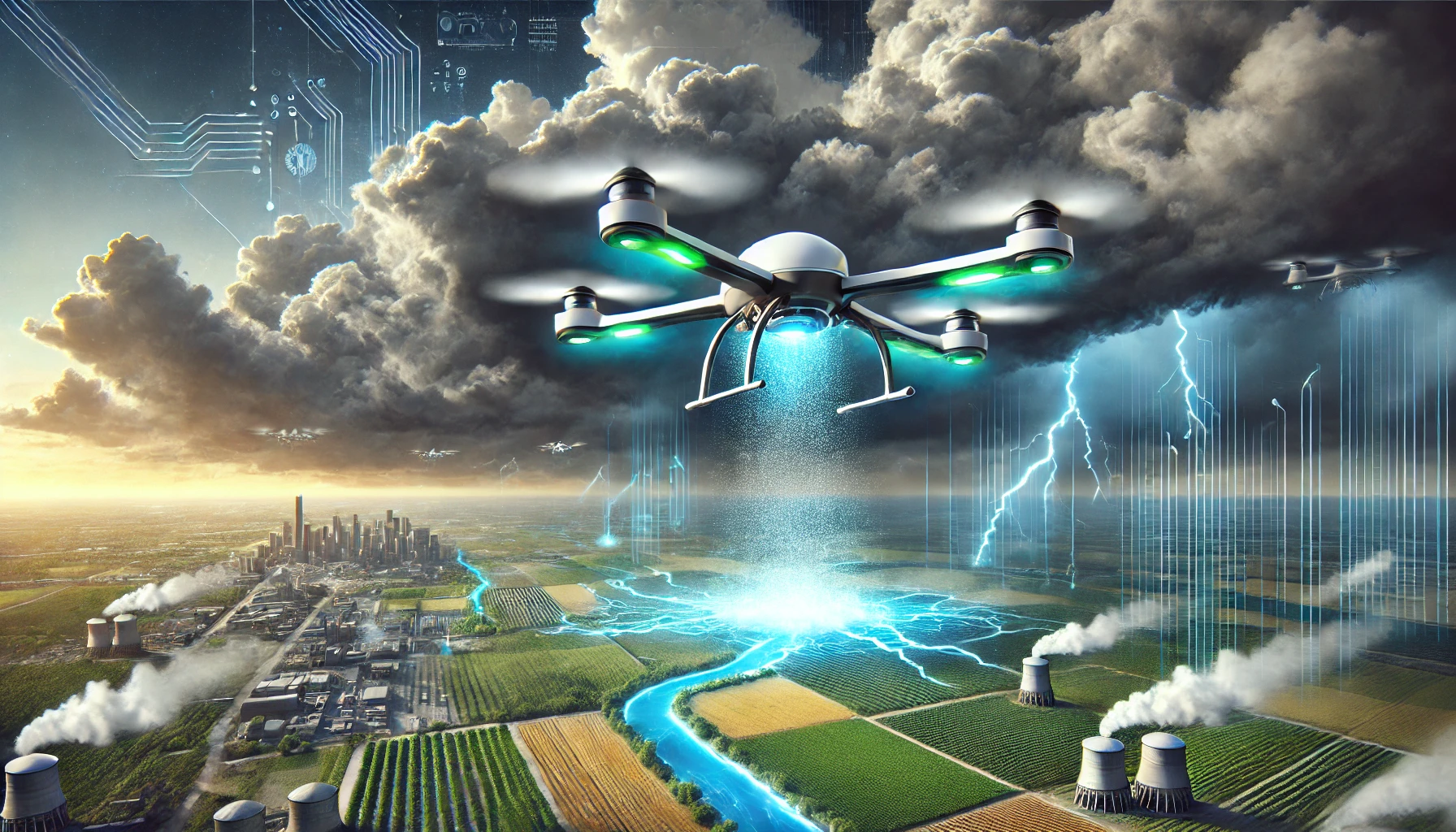China is Using High-Tech Drones to Control the Weather and Rain
In the rapidly advancing world of technology, China is at the forefront of an astonishing development: using high-tech drones to create rain on demand. This cutting-edge initiative is not only groundbreaking but also carries significant implications for global climate management and agriculture. By harnessing the power of cloud seeding and artificial rain technology, China is paving the way for a future where weather control could become a powerful tool in combating droughts and ensuring water security.
The Evolution of China’s Weather Modification Technology
China’s weather modification technology has evolved significantly over the past few decades. Initially focused on traditional cloud seeding methods, the country has now integrated advanced drone technology into its arsenal. The term China weather modification technology encompasses a range of methods and tools designed to influence weather patterns, with China’s artificial rain technology and China cloud seeding project being the most notable examples.
Cloud seeding involves dispersing substances like silver iodide into the atmosphere to encourage cloud formation and precipitation. Traditionally, this was done using planes or ground-based generators. However, with the advent of drones, China has found a more precise and efficient way to carry out these operations. Cloud seeding drones China have become an integral part of the country’s weather modification efforts, allowing for targeted and controlled rain creation.
Chinese Drones: A New Era of Rainmaking
The integration of drones into weather modification efforts marks a significant leap forward. Chinese drones create rain through a sophisticated process that involves identifying suitable clouds and then releasing cloud-seeding agents at the optimal altitude and location. These China rainmaking drones are equipped with state-of-the-art technology that enables them to perform this task with unprecedented accuracy.
The use of drones offers several advantages over traditional methods. For one, drones can operate in conditions that might be too dangerous or challenging for manned aircraft. Additionally, they can be deployed quickly and can cover large areas with minimal risk. This makes them particularly effective in regions where timely intervention is critical, such as during droughts or agricultural crises.
One of the most impressive aspects of these artificial rain drones China is their ability to create rain on demand. By using real-time data and sophisticated algorithms, these drones can determine the best time and place to release cloud-seeding agents, maximizing the chances of successful precipitation.
High-Tech Weather Control: The Future of Climate Management
The concept of high-tech weather control is no longer the stuff of science fiction. With weather modification drones at their disposal, countries like China are taking the first steps toward a future where weather patterns can be influenced with precision. This has far-reaching implications not only for agriculture and water management but also for disaster preparedness and response.
The use of China drone weather modification technology could revolutionize the way we approach climate challenges. For instance, during the summer of 2022, China experienced one of the worst droughts in its recent history. In response, the government deployed drones to induce rainfall in affected areas, providing much-needed relief to millions of people. This successful operation demonstrated the potential of drone-based weather modification to address urgent climate issues.
However, the idea of controlling the weather is not without controversy. There are concerns about the ethical implications of such technology, particularly regarding its potential impact on neighboring regions. If one country can create rain on demand, what happens to the natural weather patterns of the surrounding areas? These are questions that the global community will need to address as this technology becomes more widespread.
The Role of Cloud Seeding Drones in China’s Weather Modification Efforts
At the heart of China’s weather modification strategy are cloud seeding drones. These drones are equipped with advanced sensors and delivery systems that allow them to carry out precise cloud seeding operations. The ability to deploy these drones quickly and efficiently makes them an invaluable tool in the country’s efforts to combat climate challenges.
The cloud seeding drones China uses are part of a broader effort to integrate technology into weather management. These drones can be deployed in a variety of situations, from increasing rainfall in drought-stricken areas to controlling weather conditions during major events like the Beijing Olympics. The success of these operations has led to increased investment in drone technology, with China now leading the world in the development and deployment of weather modification drones.
The Global Implications of China’s Weather Control Technology
China’s advancements in weather modification are not just a national achievement; they have global implications. As the world grapples with the effects of climate change, the ability to control weather patterns could become a critical tool in mitigating its impacts. High-tech weather control could offer a solution to the growing problem of water scarcity, particularly in regions prone to drought.
However, the development of weather modification drones also raises important geopolitical questions. If one country can control its weather, what does that mean for its neighbors? Could the use of such technology lead to conflicts over water resources? These are issues that the international community will need to address as weather modification technology becomes more advanced and widespread.
Moreover, the environmental impact of using cloud-seeding agents like silver iodide is still a topic of debate. While studies have shown that the concentrations used in cloud seeding are generally safe, the long-term effects on the environment are not fully understood. As with any new technology, it is crucial to weigh the benefits against the potential risks.
The Future of Weather Control and Its Challenges
In conclusion, China’s weather modification technology is a testament to the power of innovation in addressing some of the world’s most pressing challenges. By leveraging high-tech weather control and cloud seeding drones, China has positioned itself as a leader in the field of weather modification. However, with great power comes great responsibility. As this technology continues to evolve, it is essential to consider the ethical and environmental implications of controlling the weather.
The future of weather modification drones is undoubtedly promising, but it will require careful management and international cooperation to ensure that this technology is used for the greater good. As we move forward, it is crucial to strike a balance between harnessing the benefits of weather control and safeguarding the natural environment.
For further insights into the evolving landscape of weather modification technology, you can read more on Regent Studies, a comprehensive resource on technological advancements and their impact on global issues. Additionally, credible sources such as China Power provide valuable information on China’s technological initiatives and their broader implications.
In the end, the ability to control the weather may no longer be a distant dream, but a reality that is unfolding before our eyes. The question now is not whether we can control the weather, but how we will choose to wield this extraordinary power.




